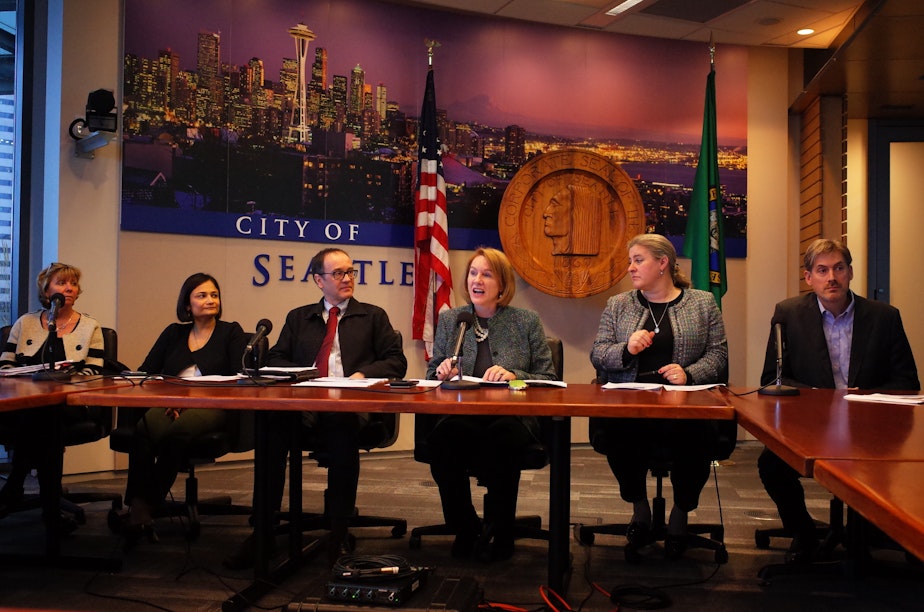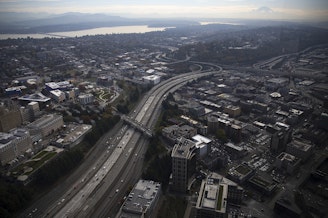What happens after the Viaduct comes down? Here are four dates you need to know

In the weeks-long Viaduct shutdown, officials say they are taking measures keep the city moving through what’s formally called the "period of maximum constraint."
During that period, there’s a plan A, which focuses on keeping traffic flowing through intersections and gives buses priority. Then there's a plan B, which calls for more transit-only streets and lanes – all to protect the movement of buses.
Either way, commuters will have to plan ahead. Here are the four dates (including a guess) that deserve a place on your 2019 calendar.
And do check the city's briefing notes for the implications for your commuting plans.
January 11, 2019 at 10 p.m.
The Alaskan Way Viaduct falls silent after 68 years. People will never have to worry again about being on it or under it during an earthquake. People at the waterfront will be able to hear the wind and the waves. The next time there is noise here, it will be the racket of demolition. Once it starts, it probably won’t let up until June.
Sponsored
January 14, 2019
This is the first rush hour without the Viaduct or the tunnel that will replace it. Enough people may stay home to make this a nothingburger — or it may be the start of a sustained mobility crisis. City and transit officials have a Plan A that calls for measures to keep traffic moving. If that’s not enough, Plan B leans even harder toward keeping buses moving by making new transit only lanes and streets.
February? March? 2019
We don’t know exactly when the Alaskan Way Tunnel opens.
Bad weather is the bane of paving projects. WSDOT says its three-week plan to build the ramps that will make the tunnel work does contain space for bad weather. But if we get a lot, all bets are off.
Sponsored
The opening of the tunnel marks the end of decades of denial and argument over whether the replacement was necessary. The 1989 collapse of Oakland, California's Cypress Street Viaduct sounded the alarm. Then the 2001 Nisqually quake, magnitude 6.8, damaged the Alaskan Way Viaduct.
The opening of the tunnel marks the moment we get to use something that we paid $3.3 billion to build. The wait was longer than expected and at times amazingly stressful. But we have arrived.
March 23, 2019
If the tunnel is operating by this date, we may be thinking the worst is behind us. And it may be. But this is the date of a new challenge: when the transit tunnel is given over entirely to Sound Transit trains. This allows the trains to increase their frequency, and it's part of the run-up to the opening of the Northgate line in 2021.
Giving the tunnel to trains means seven King Country Metro bus routes are out of the tunnel – the 41, 74, 255, 101, 102, 150 and 550. Those buses will then run on downtown streets.
Sponsored
King County Metro says during the busiest hour of the evening rush, these routes will add 72 buses to downtown streets.
It may be wisest to get on one of them.



